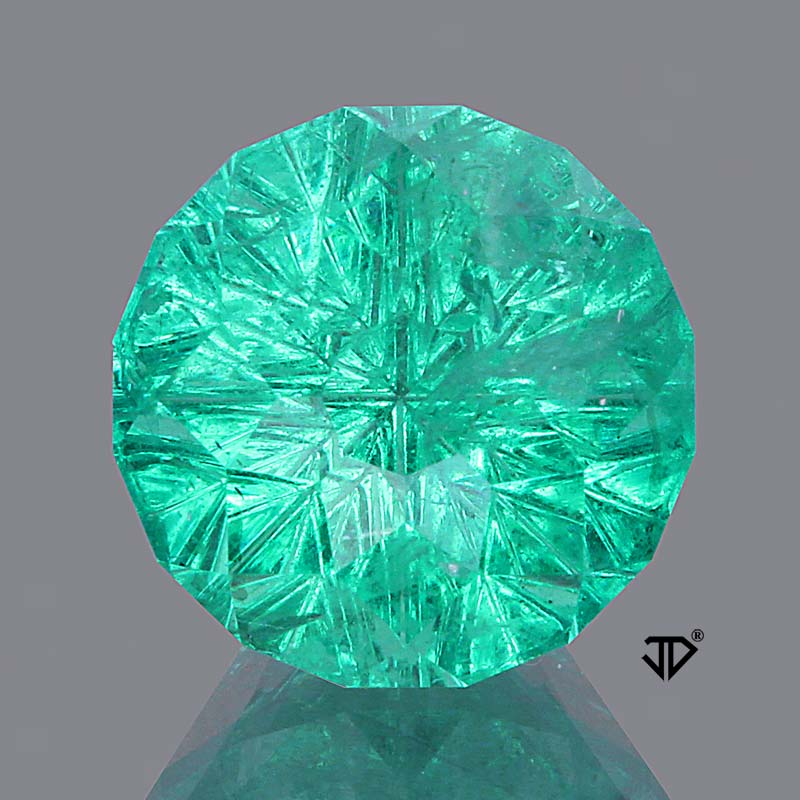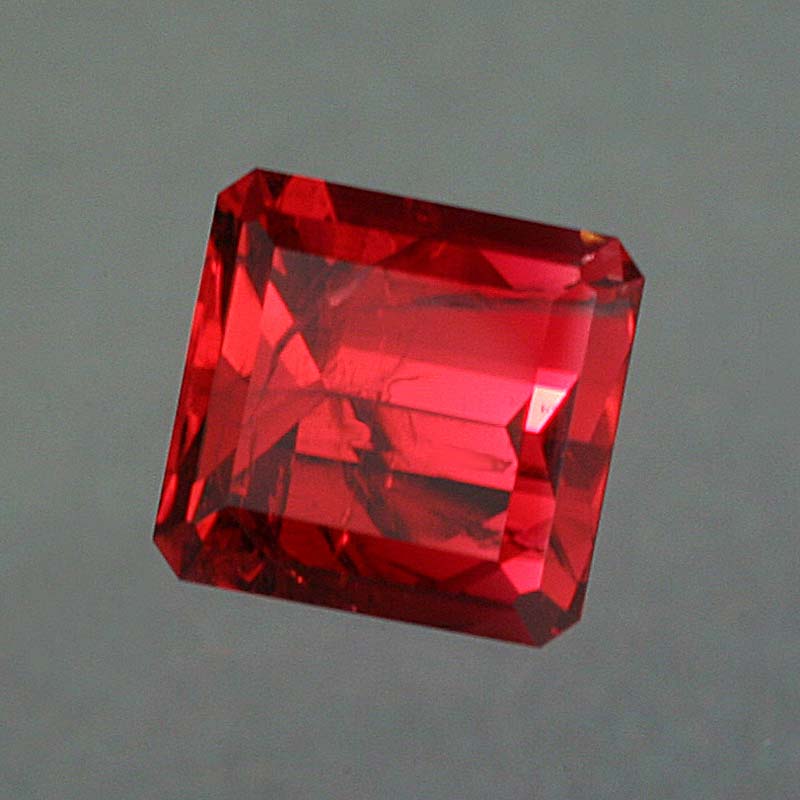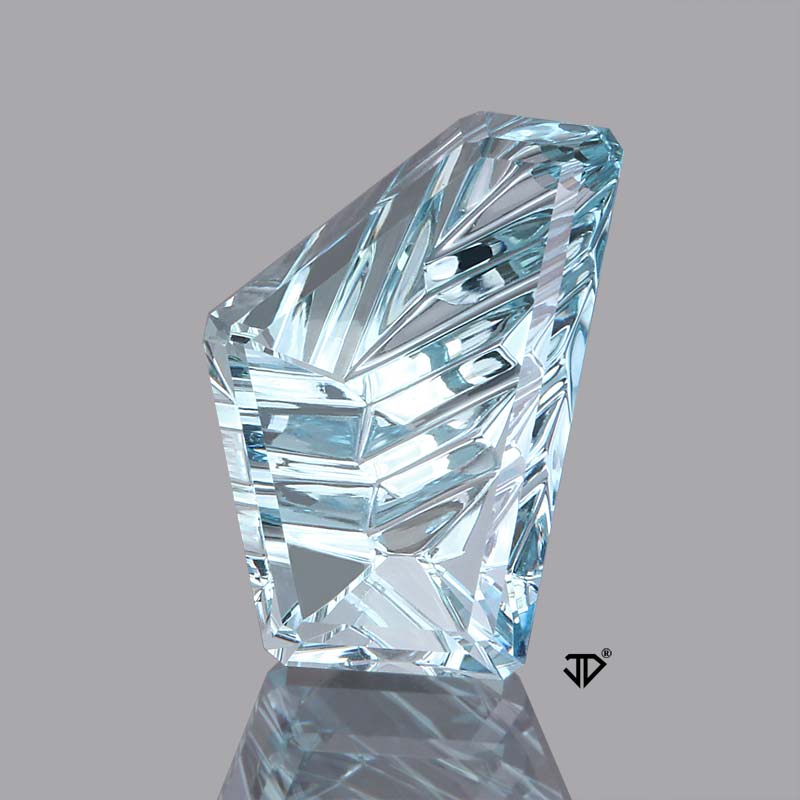
If Cleopatra were alive today, she’d be amazed at how green and vibrant an emerald can be. None of her emeralds were faceted to bring out their brilliance and sparkle. Most were mottled and heavily flawed. Their color tended to be either pale or drab. Nevertheless, those emeralds were regal jewels.
The first known emerald mines were in Egypt. They operated from around 330 BC into the 1700's. Some unconfirmed reports indicate Egyptian deposits might have been exploited as early as 3500 BC. Egypt was the only significant source of emeralds for Asia and Europe until the 1500's, when the Spanish invaded the Americas.
Up to that time, it was unknown to the outside world that various Indian tribes in Central and South America had been using extraordinary emeralds in ornaments and ceremonial objects. These emeralds, which originated from what is now Colombia, were far larger, more transparent, and much greener than those mined in Egypt. During the 16th century, vast quantities of Colombian emeralds entered the European market. The emeralds then made their way to Persia and India and became part of the treasuries of Indian Moguls and Arabian sheiks. Because of the scarcity of green forests and fields in their countries, Muslims have long cherished the color green. In fact, it is the holy color of Islam.
Europeans have also prized emeralds for their color. In the 1st century AD, Roman Scholar Pliny the Elder wrote in his encyclopedic Natural History:
Indeed, no stone has a color that is more delightful to the eye, for whereas the sight fixes itself with avidity upon the green grass and foliage of the trees, we have all the more pleasure in looking upon the emerald, there being no green in existence more intense than this. And then, besides, of all the precious stones, this is the only one that feeds the sight without satiating it. If the sight has been wearied or dimmed by intensively looking on any other subject, it is refreshed and restored by gazing at this stone. And lapidaries who cut and engrave fine gems know this well, for they have no better method of restoring their eyes than by looking at the emerald, its soft, green color comforting and removing their weariness and lassitude.
The therapeutic and soothing effects of green are even recognized today. The use of the standard “hospital green” is based on the ability of green to induce a sense of calm and rest. In China, people working in fine embroidery factories are encouraged to often glance at green plants and trees to help maintain their eyesight.
It’s appropriate that emerald was chosen as the birthstone for the month of May. Its color symbolizes the beauty and promise of nature in the spring.
Emeralds have always been treasured for the allure of their intense green color. The rich history of the emerald combined with its beauty and rarity have made it a gem of immense value. In very fine qualities, emeralds can retail for more than $20,000 a carat.
Many consumers are unaware that emerald and aquamarine are the same mineral and have the same physical characteristics. Before 1798, jewelers didn’t know this either. That’s when the French chemist Nicolas Louis Vauquelin published the first reasonably accurate chemical analysis of emerald. Emerald is a green variety of the mineral species beryl (Be3Al2Si6O18), which includes aqua- marine and other color varieties. The various colors result from foreign chemical elements such as iron, chromium, vanadium and manganese. Pure beryl is colorless. Emerald is colored by chromium and/or vanadium. Beryl varieties are described below:

Green beryl: yellowish green to bluish green beryl with a light to very light tone. It’s colored mainly by iron, with perhaps some chromium. Emerald, on the other hand, is colored primarily by chromium, and sometimes vanadium with some iron.
Photo: merald Starbrite™ Cut by John Dyer Gems

Goshenite: colorless beryl. Goshenite is named after Goshen, Massachusetts, where it was first found. Historically it has been used to imitate diamond or emerald by placing silver or green colored metal foil behind it in a closed back setting.
Photo: Goshenite Beryl Light Weaver™ Cut by John Dyer Gems

Red beryl: also called bixbite or red emerald. This valuable purplish red to orangey red beryl was discovered in Utah in 1906, but it is no longer being mined. It was always an exceptionally rare gem, but now it is even more so. Manganese is responsible for its red color.
Photo: Red Beryl Emerald Cut by John Dyer Gems
Maxixe beryl: a beryl with a medium to dark blue color, which fades in light. The blue color of this rare beryl is the result of either natural or induced radiation. Maxixe beryl was named after the mine in Brazil where it was discovered around 1917.
Cat’s-eye beryl: Chatoyancy is most likely to occur in aquamarine and morganite. However, cat’s-eye emerald and cat’s-eye yellow beryl also exist. These are collector stones.

Aquamarine: very light to medium light blue to bluish green beryl colored by iron. The name “aquamarine” means “sea water” in Latin, alluding to its color. Most natural-color aquamarine is light bluish-green. Prior to the 1900’s, this was the preferred color for aquamarine. Today it’s routinely heat-treated to remove the green component, thereby producing a permanently-colored blue stone. (Note: We leave many of our aquamarines unheated which leaves the greenish coloration to the blue that some people like, all of these will be marked as “N” in their enhancement code.) Major sources of aquamarine include Brazil, Mozambique, Ukraine, Nigeria, Pakistan and Zambia.
Photo: Aquamarine Dreamscape™ Cut by John Dyer Gems

Yellow beryl: also called golden beryl or heliodor. Found in Madagascar, Brazil, Russia, Tajikistan, Namibia and the U.S., this beryl is colored by small traces of iron and/or uranium, and may have a yellow, gold or greenish yellow color. Yellow beryl is commonly made by irradiating and then heating colorless beryl or lighter colored aquamarine. Most yellow beryl on the market has been enhanced in this manner as the deep color natural golden beryl can be heated and turned into an medium do deep aquamarine color which sells for more than its yellow counterpart. Read more about this enhancement process here.
Photo: Golden Beryl Dreamscape™ Cut by John Dyer Gems

Morganite: pink, purple or light orange beryl, which derives its color from manganese impurities. Morganite was named after the famous financier J. P. Morgan. The first morganite to be described was a pale pink variety found in California. Some of the finest, most intensely-colored morganite is found in Madagascar. Brazil is another important source, but the colors are usually lighter even though the crystals are much larger. To intensify the color, morganite is commonly irradiated and then heat-treated. Read more about this enhancement process here.
Photo: Morganite Sunburst Cut™ by John Dyer Gems
It’s best to clean beryls with warm soapy water and a soft cloth. Emeralds and red beryls are commonly fracture filled with substances that improve their clarity. (More details on that clarity enhancement can be found here.) Ultrasonic cleaners can cause the fillers to gradually be removed, reducing their apparent clarity. Avoid high heat and chemicals. With proper care, emeralds and other beryls can bring you a lifetime of enjoyment.
By Renée Newman GG, author of the Gemstone Buying Guide: How to Evaluate, Identify, Select & Care for Colored Gems. More information about Renée and her books is available at www.ReneeNewman.com.